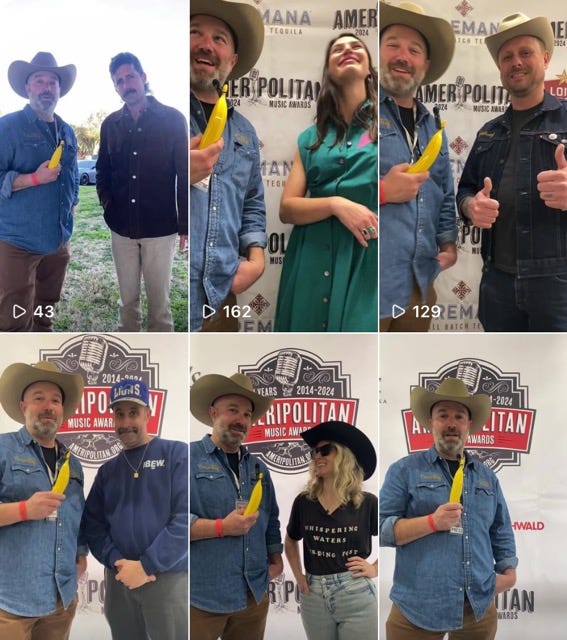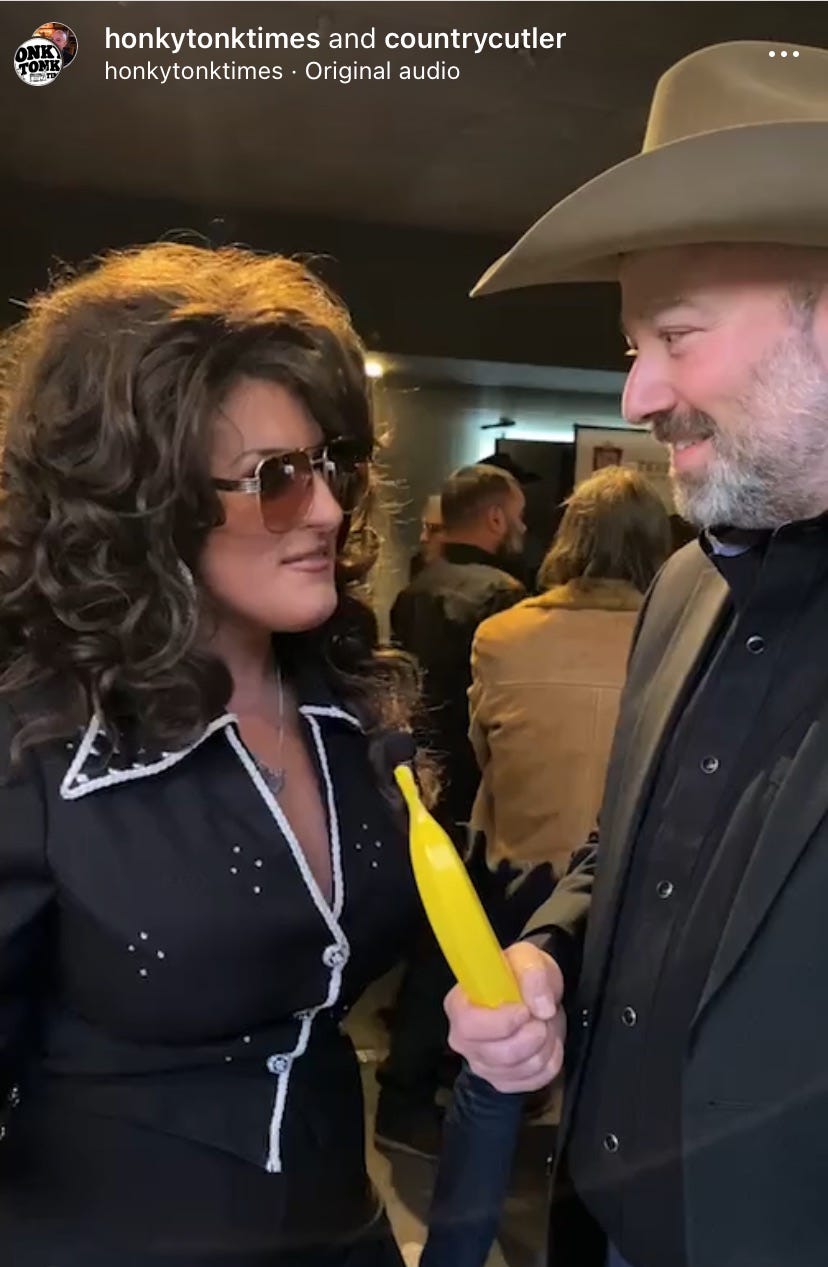I’ve covered several events over the course of my amateur journalistic career, but none were as immersive as the Ameripolitan Awards and Weekend. This three-and-a-half-day festival, born out of Dale Watson’s love of music and disdain for its industry, brings together some of the best honky tonk, Western swing, rockabilly and outlaw musicians in the world.
For a very long weekend, most of the people — both fans and musicians — stayed in the same hotel, ate at the same breakfast buffet, and shared buses, ride-shares and bar rooms as part of this celebration of music.
I struggled to balance the need to cover the event professionally with the deep-seated desire to hang out with these cool people.

I conducted 15 interviews for the Honky Tonk Times Live series, spoke with dozens of musicians about their music, upcoming projects and hopes for the award show, and visited several historic venues around Austin. But I also danced with performers and event promoters, drank many Lone Stars in those historic establishments and stayed up into the wee hours of the morning to feel a part of the community
While I don’t pretend to be a professional journalist (please see my banana microphone), I do take my responsibility to report the news of the country music scene seriously. After reviewing most of my live interviews, we did break some news — including Hannah Dasher’s upcoming project with the estate of Tammy Wynette — I am left questioning if I could have done better.

I’ve long questioned the value of entertainment and sports journalists who get just a bit too close to their subjects — but I get it now. The magnetic pull of the spotlight is hard to escape, especially when so close to it. Covering the awards show itself was likely when the attraction was most acute.
I was at the stage in the photo pit of the Moody Theater, grabbing live shots and short videos of the winners walking to the stage while mingling with the artists who were grabbing a glimpse of the legends playing short sets.
When Augie Meyers and Flaco Jimenz of the Texas Tornados started playing “Hey Baby, Que Paso,” the place erupted, many dancing in the aisles.
As I tried to grab a shot of several nominees and previous winners spinning to the expertly played accordion, Summer Dean said to me, “Come on, this is Texas; we dance here.”
So I danced.
Without question, I will continue to write critically about the industry and some of those who cover it. However, did putting down my banana and camera diminish my legitimacy at that moment?
I’m left wondering, can fans truly cover the space?
This kind of fandom leaves us with very little quality coverage of the music. No one will care what an artist wore on the red carpet in 10 years, but the utility of a well-sourced exploration of that person’s art within the context of the time can help advance our culture.
It’s doubtful that anyone will care what I have to say, but with so few people out there writing with measured intention — I can think of about five to 10 reporters/critics who write critically about the country music space — how will historians understand this period? And if it is true that we find ourselves in the early days of a country music renaissance, we really need more coverage.
While I can’t promise I won’t fanboy again, as it’s incredibly cool that I get to meet these people and be part of this community in my own small way, I will ask the questions, make the comparisons and write what I think needs to be on the page. Because, for these events to continue and this music to thrive, someone has to write the first draft of history — even if there was a dance break in the middle.





